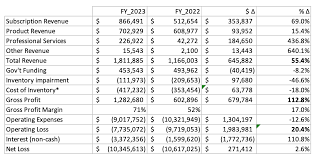How Exercise Helps Your Heart

The advice is clear-cut: Sit less and purposefully move more for heart health.
But how does exercise help keep your heart healthy? How much exercise do you need? And what kinds of exercise should you do?
All valid (and important) questions.
We talked with preventive cardiologist Vikas Sunder, MD, and cardiac rehabilitation expert Erik Van Iterson, PhD, about what exercise does for your heart health and how to get started on a heart-healthy exercise program that fits your life.
Exercise for heart health
The American Heart Association recommends at least 150 minutes of moderate-intensity exercise each week. That’s aerobic exercise — the kind that gets your heart rate up for more than a few minutes.
Additionally, an ideal exercise program for heart health also incorporates about an hour of strength-training exercises per week. Two sessions of resistance training for about 30 minutes at a time is a typical recommendation.
Those suggestions may change depending on your health, your goals and your current amount of physical activity. And reaching that standard could take some time. That’s OK.
“The goal should be to first and foremost avoid sedentary behaviors that take up the majority of your day,” Dr. Sunder notes. “Anything that people can do to move more than their baseline is important progress toward improving their heart health.”
Heart-healthy benefits of exercise
Aerobic and strength-training exercises are both important for a healthy heart.
“When your heart functions in a healthy way, it’s more able to interact and communicate with other organ systems,” Dr. Van Iterson points out. “Your whole body benefits from well-oxygenated blood moving from the heart, out to your body and back again. Exercise helps to improve that entire process.”
What specifically can you look for as heart-healthy benefits of exercise? Dr. Sunder and Dr. Van Iterson share just a few.
Lowered risk of heart conditions
Getting your body moving has plenty of heart-healthy benefits that directly affect how your heart works. Among them:
- Lower blood pressure.
- Lower cholesterol.
- Reduced risk of Type 2 diabetes.
- Reduced risk of heart disease.
- Weight management.
- Improved cardiorespiratory fitness.
“Scientific data has consistently shown that aerobic, or cardio-style, exercise improves not just the circulation within your heart, but also the circulation throughout your entire cardiovascular system,” Dr. Van Iterson shares. “That ability to circulate blood in an effective and efficient way typically leads to powerful reductions in cardiovascular risk.”
Lowering visceral fat
You may have heard that a round mid-section (or so-called “apple body shape”) can be a sign of potential health problems. And it’s true.
A high waist circumference (the measurement around your belly button area) can be a sign that you may have higher-than-healthy levels of fat deep inside your abdomen, surrounding your organs. It’s called visceral fat, and too much can be dangerous to your health.
“High levels of visceral fat can have detrimental effects on the cardiovascular system and increase systemic inflammation,” Dr. Sunder affirms.
Aerobic exercise and strength-training exercises that incorporate your core can help burn fat and increase the overall proportion of lean muscle throughout your body.
Improved metabolic rate
Strength-training exercise can help your body gain more lean muscle mass. And muscle helps keep your body and heart healthy by improving your metabolic rate. In other words, muscle helps your body burn calories more quickly — even when your body is at rest.
“Unlike fat cells, muscle tissue is metabolically active,” Dr. Van Iterson explains. “That means that when you have a higher muscle mass, it’s not only during the literal act of exercise that your metabolism revs up; it’s working almost all the time.”
Improved mental health
Exercise releases feel-good hormones called endorphins that help improve your mood and reduce your stress levels. That’s important because your mental health plays a big role in keeping your heart healthy. And as exercise makes you feel good, it should help with keeping up your motivation to do more exercise consistently.
“We know from studies that mental health concerns like anxiety and depression are associated with increased risk of heart attack, stroke and other cardiac events,” Dr. Sunder says. “And regular exercise can greatly decrease your risk for anxiety disorders and depression.”
Exercise is like the beginning of a chain reaction. It increases endorphins, which makes you feel happier. In turn, that lowers your stress, which improves your mental health. And improved mental health lowers your risk for a slew of heart-related health conditions.
Heart-healthy exercises to try
The No. 1 rule for starting a new exercise program is to start small and build up gradually. Because consistent exercise over time is the key to success.
“Your exercise routine needs to be something that you can sustain over time,” Dr. Van Iterson advises. “I encourage people to view exercise as something they’re doing to set themselves up for long-term success. Overloading your system by doing too much too fast will turn out to be a counterproductive experience.”
Feeling exhausted and being out of breath at the end of a workout aren’t typical signs you should use to evaluate whether you had a good workout. In fact, those feelings commonly signal that you overdid it.
Avoid the trap of doing one really intense exercise session and then needing a few days to recover before being able to exercise again.
If you’re new to exercise, Dr. Sunder and Dr. Van Iterson recommend starting with aerobic activities. After you consistently meet or exceed your aerobic exercise goal, consider adding in some strengthening exercises.
Try starting with these exercises to improve your heart health.
Aerobic exercise
Doing aerobic, or cardio, exercise is the first step to improving your heart health.
“The biggest thing that gets overlooked is that you can keep it simple,” says Dr. Van Iterson. “It’s really thinking about what we consider cardio or aerobic exercise, like walking. For others, it can be running or jogging. It all depends on where you’re at in your life and identifying realistic goals, what recent background you have with exercising and if you have any risk factors like a family history of heart disease.”
Remember, too, that even your day-to-day activities matter.
“Even cleaning your house, gardening or shopping can be ways to get in some physical movement that benefits your heart,” Dr. Sunder notes. “That all counts as time spent up and moving, which, ultimately, is the goal.”
Schedule your exercise in ways that work for you. If you don’t always have a half-hour block to dedicate to exercise, don’t let it discourage you from doing what you can. Even if you can get 10 minutes in a day, it’s worth it.
Here are a few examples of exercise that benefits your heart health:
- Brisk walking.
- Jogging or running.
- Swimming.
- Cycling.
- Climbing stairs.
- Rowing.
- Cross-country skiing.
Strength-training exercise
For some people, strength-training exercise can conjure up images of powerlifting on a sweaty gym bench, and if that’s your thing, more power to you.
But there are other exercises that can help build muscle and improve your heart health that may be more approachable for newcomers.
You start by trying:
- Pilates.
- Yoga.
- Leg lifts.
- Crunches.
- Kettlebells.
- Small dumbbells.
- Resistance bands.
- Functional training (like push-ups, squats and lunges).
- Weight machines.
Anything you can do to get your body moving is going to benefit your heart. And the rest of your body. And your mental health. So, start small. Keep going. And show your heart the love it needs.


 United Kingdom
United Kingdom Argentina
Argentina  Australia
Australia  Austria
Austria  Brazil
Brazil  Canada
Canada  Germany
Germany  Ireland
Ireland  Italy
Italy  Malaysia
Malaysia  Mexico
Mexico  New Zealand
New Zealand  Poland
Poland  South Africa
South Africa  United States
United States 























